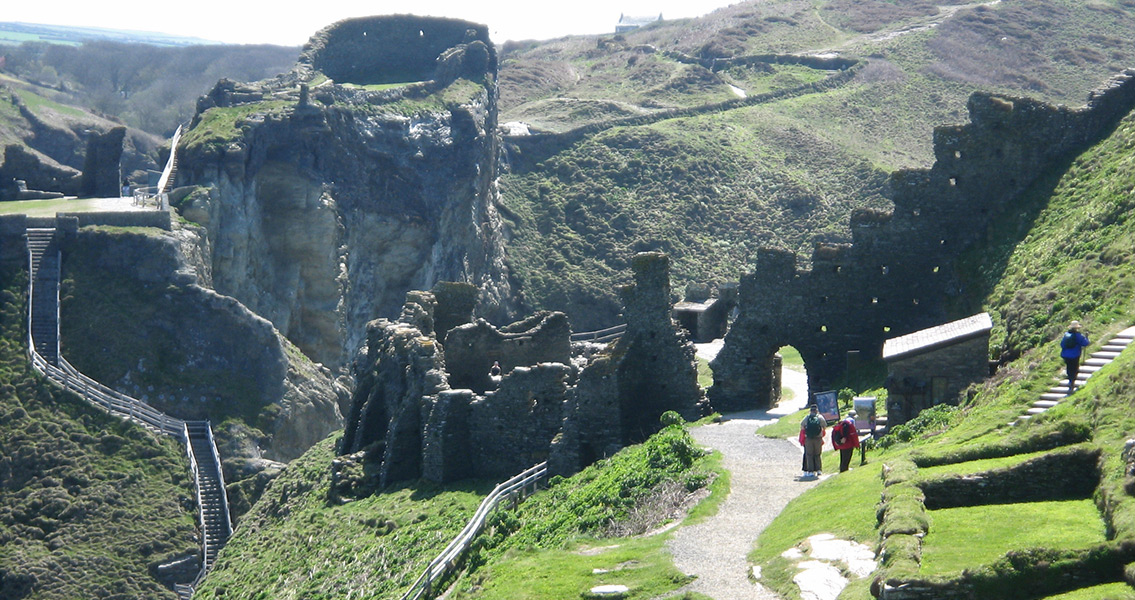<![CDATA[The remains of a royal palace dating back to the sixth century CE, located at the fabled birthplace of King Arthur, have recently been uncovered by the Cornwall Archaeological Unit (CAU). Cornwall’s Tintagel, a thirteenth century castle, has long been associated with the Arthurian legend. It is purportedly the site of Arthur’s conception and birth, as the fabled story goes that Uther Pendragon infiltrated the castle to bed Lady Igraine, the Duke of Cornwall’s wife and Arthur’s mother. The wizard Merlin is said to have used his magic to disguise Uther as the Duke. Archaeological digs have been ongoing at Tintagel as part of an English Heritage research project in order to discover the site's roots, specifically from the fifth to the seventh centuries. The new discovery, a series of one-meter thick walls dating to the sixth century, are thought to have been part of a palace that was once part of Dumnonia, an ancient kingdom in the south-west of England. The CAU made use of new technologies in order to locate and excavate the walls. Additional finds include in excess of 150 glass and pottery fragments, items that would have been imported by the palace from far-flung locales – making a case for the idea that the inhabitants were quite wealthy indeed. Artifacts unearthed include amphora shards from the late Roman period and the shattered rim of a piece of Phocaean Turkish red-slip tableware dating to the fifth or sixth century. The piece of tableware was likely from a larger bowl or dish which was possibly used during feasting to share food, experts say. In an article from The Telegraph, Win Scutt said that the new find is the most significant one of its type at Tintagel for several decades. The properties curator for English Heritage added that the current three-week dig is the initial step in a five-year plan to uncover more of the past of Tintagel and Cornwall. The discovery of a possible royal palace, if that’s what this high-status building indeed is, could play a transformative role in understanding Tintagel, Scutt stated. 2017 will see wider excavations, the English Heritage official said, remarking that the artifacts discovered at this smaller dig will be subjected to careful scrutiny in the laboratory; something that could shed even more light on Tintagel and its secrets. Four trenches were dug in a previously untouched pair of terraces at Tintagel, unearthing buildings on the island settlement dating to the time when Anglo-Saxon invaders were clashing with Romano-British rulers. Earlier geophysical surveys of these terraces alerted researchers of the walls and the buried buildings beneath the earth, and have so far found a pair of rooms around 4 meters wide and 11 meters long. One of the most noteworthy archaeological sites in Europe, Tintagel was built in the early to middle thirteenth century by Richard, Earl of Cornwall, the brother of Henry III. However, the site was previously a settlement during the early Medieval period, one that is likely to have been a port of call for trade – leading Tintagel to become a high-status region. Its role as the possible birthplace of King Arthur merely adds fuel to the fire for historians, archaeologists, and tourists alike. Image courtesy of IDS Photos ]]>
Palace Found at Tintagel, Fabled Birthplace of King Arthur
